SmartNIC and IPU Hardware Portfolio
Product Overview
SmartNIC and IPU Hardware
In a world of reconfigurable computing, it is the software that defines the use case functionality. However, the wrong choice of hardware can severely downgrade the overall value and reliability of the solution.
Napatech SmartNICs and Infrastructure Processing Units (IPU) are designed to meet the standards of modern servers, with the rapidly changing world of data center and hyperscale deployments in mind.
Industry-Leading Reliability
When selecting a hardware solution, reliability is of the utmost importance. Software can be patched if faulty, but hardware needs a physical replacement, which is costly and complex.
For all Napatech designs, performance and reliability are unconditional tenets. With ~300,000 hours of mean time between failures (MTBF), our hardware ensures uninterrupted, error-free operation for many years ahead – as validated by our long-term loyal customer base.
Superior Thermal Design
The power of SmartNIC and IPU technologies is only of value if it can be harnessed – and that requires cooling. An efficient cooling solution allows you to fit more compute power into your rack space, which translates into substantial TCO benefits.
Napatech SmartNICs and IPUs are designed with active and passive cooling. The active solution provides 100% self-contained cooling with no requirements for a specific server airflow. This solution exhales most of the dissipated energy outside the server through front plate cutouts, which gives customers the freedom to choose server designs without worrying about cooling capacity.
To meet telco requirements, the passively cooled solutions are NEBS-compliant. A proprietary full body heatsink has been developed securing optimal cooling performance in the challenging NEBS applications for all critical components in the SmartNIC or IPU.
Hardware Resilience
Modern servers have quick-release PCI fastening mechanisms that allow for easy card replacement. Some of these designs, however, expose the card to vibration during transportation. Napatech SmartNICs and IPUs are designed specifically to ensure hardware resilience in this environment.
Standards of Excellence
Network appliances often require exceptions and compromises to fit a certain form factor or price point. In complex data center environments, it is therefore extremely beneficial if the hardware adheres to established industry standards, as this will make it easier for customers to integrate it in their solution. As a certified PCI-SIG member, Napatech has completed the meticulous compliance test, which demonstrates our high standards of excellence.
Typical Applications
Napatech offers a range of software options for the SmartNIC and IPU hardware, addressing use cases within:
- Cybersecurity
- Network quality of experience assurance
- Network & security forensics
- Application performance management
- Network test & measurement
- Cyber defense
- vSwitch acceleration
- Virtual network monitoring
- Storage offload
- Network security offload
Solutions
Application and network performance monitoring
Subscriber monitoring
Capture to disk, replay from disk
Latency measurments
Cybersecurity threat detection
Network test and measurement
Cybersecurity threat prevention
5G User Plane Function (UPF) offlload
Full host CPU offload
OpenStack Infrastructure-as-a-Service (IaaS)
Bare metal cloud platform IaaS with tenant isolation
Platforms
Link-Capture™ Software
Link-Inline™ Software
Link-Virtualization™ Software
Link-Storage™ Software
Link-Security™ Software
Link-Programmable™
Smart Network Interface Cards (SmartNICs)
Infrastructure Processing Units (IPUs)
Services
Professional Services
Custom Development
| SmartNIC Products for COTS Servers | 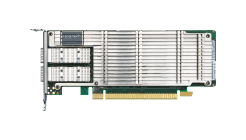 |
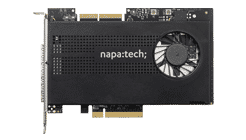 |
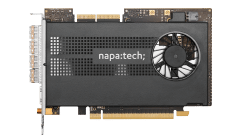 |
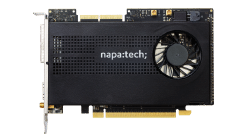 |
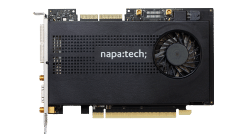 |
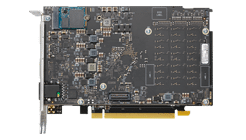 |
||
| Model | NT50B0x | NT40A1x-SCC | NT100A0x-SCC | NT200A0x-SCC | NT400D1x-SCC | F207?X | ||
| General Hardware Specifications | SmartNIC | SmartNIC | SmartNIC | SmartNIC | SmartNIC | IPU | ||
| Height | Half | Full | Full | Full | Full | Full | ||
| Length | Half | Half | Half | Half | Half | Half | ||
| Width | Single-Slot | Single-Slot | Single-Slot | Single-Slot | Single-Slot | Dual-Slot | ||
| FPGA technology | XCKU11P [1] XCKU15P [1] |
XCKU11P [1] XCKU15P [1] |
XCVU5P [1] XCVU7P [1] XCVU9P [1] | XCVU5P [1] XCVU7P [1] XCVU9P [1] | AGF014 [1] AGF019 [1] AGF022 [1] AGF023 [1] AGF027 [1] |
AGF022 [1] AGF023 [1] AGF027 [1] | ||
| – Embedded SoC | Quad-core Arm Cortex-A53 [1] | Quad-core Arm Cortex-A53 [1] | ||||||
| – Crypto | AES and SM4 [1] | |||||||
| System on Chip (SoC) | Intel® Xeon® D-1700 Series [1] | |||||||
| SDRAM FPGA | DDR4 | DDR4 | DDR4 | DDR4 | DDR4 ECC | DDR4 ECC | ||
| – Density | 2×5 GB [1] 2×10 GB [1] |
1×4 GB | 2×4 GB [1] 2×8 GB [1] |
3×4 GB [1] 3×8 GB [1] |
3×4 GB [1] 3×8 GB [1] 4×4 GB [1] |
4×4 GB [1] 3×4 + 1×8 GB [1] |
||
| – Bandwidth (Number of memory controllers) | 427 Gbps | 154 Gbps | 341 Gbps | 512 Gbps | 512 Gbps (3x) [1] 683 Gbps (4x) [1] |
341 Gbps 512 Gbps |
||
| SDRAM SoC | DDR4 ECC | |||||||
| – Density | 2×8 GB [1] 3×8 GB [1] 3×16 GB [1] |
|||||||
| QSPI Flash memory | 2×512 Mbit | 2×512 Mbit | 2×512 Mbit | 2×512 Mbit | 2×1024 Mbit | 2×2048 Mbit | ||
| M.2 NVMe x4 (2230/2242) expansion slot for SSD | Up to 2 TB | |||||||
| Host Interface | PCIe3 x16 | PCIe3 x 8 | PCIe3 x16 | PCIe3 x16 | PCIe4 x16 | PCIe4 x16 | ||
| Network Ports and Link Speeds | ||||||||
| Network ports | 2xSFP28 | 4×SFP+ | 4×SFP28 | 2xQSFP28 | 2xQSFP56 | 2xQSFP56 | ||
| 1G [2] | • | • | • | • [3] | • [3] | • [3] | ||
| 10G [2] | • | • | • | • [3] | • [3] | • [3] | ||
| 25G [2] | • | • | • [3] | • [3] | • [3] | |||
| 40G [2] | • | • | • | |||||
| 50G [2] | • [4] | • [4] | • [4] | |||||
| 100G [2] | • | • | • | |||||
| 200G [2] | • | • | ||||||
| Management Port | ||||||||
| RJ45-F 1000BASE-T (on PCI bracket) | 1 | |||||||
| Time Synchronization Ports [2] | ||||||||
| Tyco Mini female for RJ45-F/ SMA-F adapter (on PCI bracket) | ||||||||
| Internal MCX-F for PPS and NT-TS | 2 | 2 | 2 [1] | 2 [1] | ||||
|
RJ45-F 1000BASE-T IEEE1588 PTP (on PCI bracket) |
1 | 1 | 1 [1] | 1 [1] | ||||
| SMA-F for PPS & 10Mhz (on PCI bracket) | •[1] | 1 | 1 | 2 [1] | 1 [1] | |||
| Time Synchronization Support | ||||||||
| Stratum 3E compliant TCXO | •[1][6] | •[1][6] | •[6] | •[6] | •[6] | •[6] | ||
| Synchronous Ethernet (SyncE) over RJ45 port [2] | • | •[1] | •[1] | |||||
| Synchronous Ethernet (SyncE) over network ports | •[1] | |||||||
| High-Speed Interconnect Port [2] | ||||||||
| Maximum bidirectional bandwidth | 900 Gbps | 822 Gbps | 900 Gbps | 900 Gbps | TBD | |||
| Board Management | ||||||||
| MCTP over SMBus | • | • | • | • | ||||
| MCTP over PCIe VDM | •[2] | •[2] | •[2] | • | ||||
| PLDM for Monitor and Control | • | • | • | • | ||||
| NCSI RBT | • | • | ||||||
| FPGA temperature | • | • | • | • | • | • | ||
| Pluggable module temperature | • | • | • | • | • | • | ||
| Ambient temperature | • | • | • | • | • | • | ||
| Power sensors | • | • | • | • | • | • | ||
| Fan | • | • | • | • | ||||
| Power and Cooling | ||||||||
| Cooling solution | Passive | Active | Active | Active | Active | Passive | ||
| Max. power dissipation [5] | 55 W | 58 W | 75 W | 120 W | TBD W | 250 W | ||
| Idle power dissipation [5] | 10 W | 10 W | 15 W | 15 W | TBD W | TBD | ||
| Airflow requirement | >= 2.5 m/s | None | None | None | None | >= 2.5 m/s | ||
| General Hardware Properties | ||||||||
| Operating temperature | 0°C to 45°C (32°F to 113°F) | -5 °C to 45 °C (23 °F to 113 °F) | ||||||
| Operating humidity | 20% to 80% | |||||||
| MTBF (hours) | 991,182 | 317,821 | 317,821 | 317,821 | – | TBD | ||
| Weight | 350 g | 355 g | 355 g | 355 g | – | 682 g | ||
| Regulatory compliance (common) | PCI-SIG®, CE, CB, RoHS, REACH, cURus (UL), FCC, ICES, VCCI, RCM | PCI-SIG®, CE, CB, RoHS, REACH, cURus (UL), FCC, ICES, VCCI, RCM | ||||||
| Regulatory compliance (product specific) | KCC[7] | KCC[7] | KCC | KCC | KCC[7] | KCC[7] | ||
[1] Mount option supported by HW
[2] Features depend on software support, please refer to product briefs for Link Software
[3] Breakout or QSFP28 to SFP28 adapter
[4] Breakout
[5] The power dissipation values indicate the capabilities of the hardware platform; the actual power consumption is dependent on the FPGA software payload.
[6] Stratum 3E compliant TCXO option supported by HW
[7] Contact Napatech
| SmartNIC Hardware NEBS-Compliant |  |
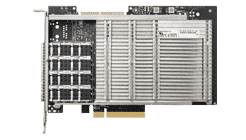 |
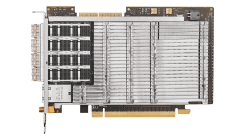 |
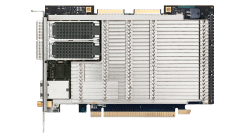 |
 |
 |
| Model | NT50B0x | NT40A1x- NEBS | NT100A0x- NEBS | NT200A0x- NEBS |
NT400D1x- NEBS |
F207?X |
| General Hardware Specifications | SmartNIC | SmartNIC | SmartNIC | SmartNIC | SmartNIC | IPU |
| Height | Half | Full | Full | Full | Full | Full |
| Length | Half | Half | Half | Half | Half | Half |
| Width | Single-Slot | Single-Slot | Single-Slot | Single-Slot | Single-Slot | Dual-Slot |
| FPGA technology | XCKU11P [1] XCKU15P [1] |
XCKU11P [1] XCKU15P [1] | XCVU5P [1] XCVU7P [1] XCVU9P [1] | XCVU5P [1] XCVU7P [1] XCVU9P [1] | AGF014 [1] AGF019 [1] AGF022 [1] AGF023 [1] AGF027 [1] |
AGF022 [1] AGF023 [1] AGF027 [1] |
| – Embedded SoC | Quad-core Arm Cortex-A53 | Quad-core Arm Cortex-A53 [1] | ||||
| – Crypto | AES and SM4 [1] | |||||
| System on Chip (SoC) | Intel® Xeon® D-1700 Series | |||||
| SDRAM FPGA | DDR4 | DDR4 | DDR4 | DDR4 | DDR4 ECC | DDR4 ECC |
| – Density | 2×5 GB [1] 2×10 GB [1] |
1×4 GB | 2×4 GB [1] 2×8 GB [1] |
3×4 GB [1] 3×8 GB [1] |
3×4 GB [1] 3×8 GB [1] 4×4 GB [1] |
4×4 GB [1] 3×4 + 1×8 GB [1] |
| – Bandwidth (Number of memory controllers) | 427 Gbps | 154 Gbps | 341 Gbps | 512 Gbps | 512 Gbps (3x) [1] 683 Gbps (4x) [1] |
341 Gbps 512 Gbps |
| QSPI Flash memory | 2×512 Mbit | 2×512 Mbit | 2×512 Mbit | 2×512 Mbit | 2×1024 Mbit | 2×2048 Mbit |
| M.2 NVMe x4 (2230/2242) expansion slot for SSD | Up to 2 TB | |||||
| Host Interface | PCIe3 x16 | PCIe3 x8 | PCIe3 x16 | PCIe3 x16 | PCIe4 x16 | PCIe4 x16 |
| Network Ports and Link Speeds | ||||||
| Network ports | 2xSFP28 | 4×SFP+ | 4×SFP28 | 2xQSFP28 | 2xQSFP56 | 2xQSFP56 |
| 1G [2] | • | • | • | • [3] | • [3] | • [3] |
| 10G [2] | • | • | • | • [3] | • [3] | • [3] |
| 25G [2] | • | • | • [3] | • [3] | • [3] | |
| 40G [2] | • | • | • | |||
| 50G [2] | • [4] | • [4] | • [4] | |||
| 100G [2] | • | • | • | |||
| 200G [2] | • | • | ||||
| Management Port | ||||||
| RJ45-F 1000BASE-T (on PCI bracket) | 1 | |||||
| Time Synchronization Ports [2] | ||||||
| Tyco Mini female for RJ45-F/ SMA-F adapter (on PCI bracket) | ||||||
| Internal MCX-F for PPS and NT-TS | 2 | 2 | 2 [1] | 2 [1] | ||
|
RJ45-F 1000BASE-T IEEE1588 PTP (on PCI bracket) |
1 | 1 | 1 [1] | 1 [1] | ||
| SMA-F for PPS & 10Mhz (on PCI bracket) | 1 [1] | 1 | 1 | 2 [1] | 1 [1] | |
| Time Synchronization Support | ||||||
| Stratum 3 compliant TCXO | •[1][6] | •[1][6] | •[6] | •[6] | •[6] | •[6] |
| Synchronous Ethernet (SyncE) over RJ45 port [2] | • | •[1] | •[1] | |||
| Synchronous Ethernet (SyncE) over network ports | •[1] | |||||
| High-Speed Interconnect Port [2] | ||||||
| Maximum bidirectional bandwidth | 900 Gbps | 822 Gbps | 900 Gbps | 900 Gbps | TBD | |
| Board Management | ||||||
| MCTP over SMBus | • | • | • | • | ||
| MCTP over PCIe VDM | •[2] | •[2] | •[2] | • | ||
| PLDM for Monitor and Control | • | • | • | • | ||
| NCSI RBT | • | • | ||||
| FPGA temperature | • | • | • | • | • | • |
| Pluggable module temperature | • | • | • | • | • | • |
| Ambient temperature | • | • | • | • | • | • |
| Power sensors | • | • | • | • | • | • |
| Power and Cooling | ||||||
| Cooling solution | Passive | Passive | Passive | Passive | Passive | Passive |
| Max. power dissipation [5] | 55 W | 58 W | 75 W | 120 W | TBD W | 250 W |
| Idle power dissipation [5] | 10 W | 10 W | 15 W | 15 W | TBD W | TBD |
| Airflow requirement | >= 3.5 m/s | >= 2.5 m/s | >= 2.5 m/s | >= 2.5 m/s | >= 2.5 m/s | >= 2.5 m/s |
| General Hardware Properties | ||||||
| Operating temperature | –5 °C to 55 °C (23 °F to 131 °F) | –5 °C to 45 °C (23 °F to 131 °F) | ||||
| Operating humidity | 5% to 85% | |||||
| MTBF (hours) | 991,182 | 398,565 | 398,565 | 398,565 | TBD | TBD |
| Weight | 350 g | 350 g | 350 g | 350 g | TBD | 682 g |
| Regulatory compliance (common) | PCI-SIG®, NEBS level 3, CE, CB, RoHS, REACH, cURus (UL), FCC, ICES, VCCI, RCM | |||||
| Regulatory compliance (product specific) | KCC[7] | KCC[7] | KCC[7] | KCC[7] | KCC[7] | KCC[7] |
[1] Mount option supported by HW
[2] Features depend on software support, please refer to product briefs for Link Software
[3] Breakout or QSFP28 to SFP28 adapter
[4] Breakout
[5] The power dissipation values indicate the capabilities of the hardware platform; the actual power consumption is dependent on the FPGA software payload
[6] Stratum 3E compliant TCXO option supported by HW
[7] Contact Napatech